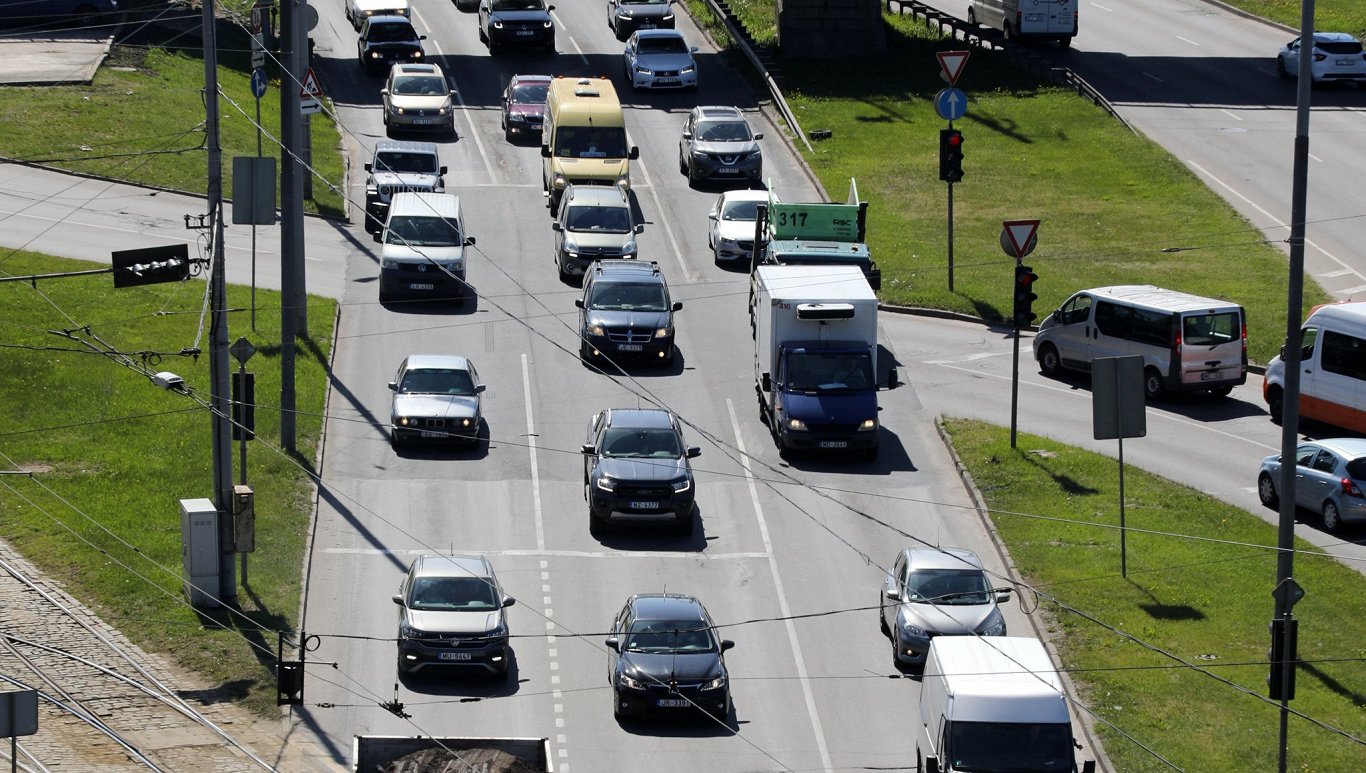In 2021, 73 % of Latvian residents aged 15 to 84 years made at least one trip a day outside their home. On average, one resident of Latvia travelled 32.2 kilometres per day and spent an average of 80 minutes on the road.
On average 3.1 kilometres per day were walked, which is 0.4 km more than in 2017 – which may mean that we are getting fitter or that our cars are less reliable (or something else entirely).
According to the survey on mobility of population carried out by the Central Statistical Bureau (CSB), the main reason for commuting was work (32.4 %), as well as shopping (27.5 %) and leisure (21.7 %).
Have a good trip?
Trip-makers are those respondents who declared at least one trip on the reference day. In 2021, the share of trip-makers in Latvia constituted 73 %, six percentage points less than in 2017. The share of people leaving home on working days was higher (76 %) that going out on weekends and holidays (65.8 %).
Similarly, in 2017, 82.7 % of Latvian residents were going out on weekdays, but 69 % on weekends. Last year 6.7 percentage points less residents were leaving home on working days, which could be explained by the opportunity to work and study remotely created under the impact of COVID-19.
25 % of the population stayed at home on the reference day because they had short-term or long-term health problems (30.3 %), had a holiday at school or work (21.1 %), did not need to go anywhere or had another reason not to move (19.8 %), had remote work or studies (11.2 %), weather conditions interfered (9.4 %) or residents did not move due to security reasons (8.1 %). 2 % of the population moved outside the territory of Latvia on the reference day.
Last year on average one resident of Latvia had 2.8 trips per day (in 2017 – 2.7). On weekdays the number of trips was higher (2.8), while on holidays – lower (2.6).
The greatest number of trips were made to escort other persons (mainly children to school or pre-school education institution) – 2.5, followed by shopping – 2.1, other purpose – 2.1 and commuting to work – 2.
In respect to the mode of transport used, the highest number of trips were made by passenger car (drivers had 2.8 trips and their passengers 2.2) as well as by cycling and walking (2.1).
Comparison of the fuel used in passenger car, it may be concluded that the greatest number of trips were made by vehicles with petrol internal combustion engines.
Day tripper, yeah
On average daily, population tends to spend the longest time on train (82 minutes), travelling on average 59 km a day. As a passenger car driver residents spent 68 minutes, measuring 47 km on average, and 59 minutes – as a passenger. (44 km), by bus 64 min (23 km), by bicycle 55 min (10 km), with an electric micromobility device (motor-scooter, scooter, electric bicycle, unicycle) 55 min (14 km), by walking 51 min (3.1 km), by tram 47 min (8 km) and by trolleybus 45 min (9 km).
Total distance travelled in Latvia per day was 32.2 km, but in Functional Urban Areas (FUA) it was 11.2 km shorter (21 km). Also, in 2017, a similar trend was observed on the distance travelled per day – 20.4 km in Functional Urban Areas and 29.6 km in Latvia as a whole.
In 2017, vehicles equipped with diesel engines (46.7 km) travelled the longest distances per day on short trips up to 300 km, but in 2021 the longest distances per day were travelled by vehicles equipped with liquefied petroleum gas/petrol engines (60.3 km).
Similar as in 2017 the longest distance and the longest time were spent on professional/ business trips within Latvia. Also, in 2021, Latvian residents mainly did their shopping probably by walking, as shops that are located close to home were chosen, the average trip distance travelled because of this purpose is the shortest (12 km).
Passenger car occupancy in Latvia
The average number of people in a car during one trip in Latvia constituted 1.7 persons; in FUA the indicator was lower – 1.5. Car occupancy differs notably between working days (1.5) and weekends, holidays (2.2).
If in 2017 Latvian population aged 15–84 travelled 12 billion passenger kilometres, in 2021 they travelled a billion less (11 billion). That is 7 290 passenger kilometres per capita a year, which would be more than three times the distance travelled to Paris.
Out of all passenger kilometres, 9.7 billion or 87.6 % were travelled by passenger car, while 3.9 % by walking.
Sustainable mobility
Sustainable mobility covers walking, cycling and using electric micromobility device, public transport, electric or hybrid vehicle, as well as using of multimodal transport.
In 2017, 2 billion passenger kilometres or 16 % of all passenger kilometres were travelled by using sustainable mode of transport. In 2021, there was a decrease, as 13 % or 1.5 billion of all passenger kilometres were made using sustainable mode of transport.
The survey was conducted during the period from the end of August to the beginning of December 2021 and covered 9 000 inhabitants of Latvia aged 15–84 selected with the help of random sampling method. The response rate in the survey accounted for 60.4 %. In Latvia, such survey was conducted for the second time and it was done in compliance with the Eurostat recommendations on passenger mobility statistics.
The survey was co-funded by the EU grant project Passenger Mobility and Road Transport Statistics.






















